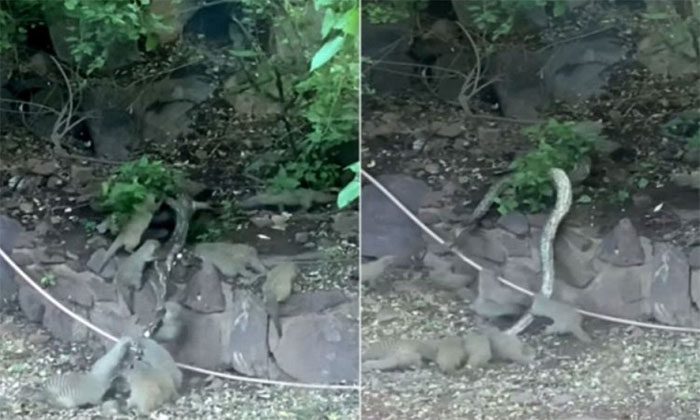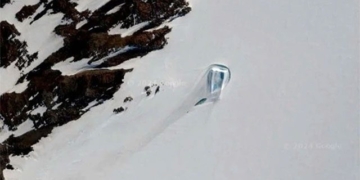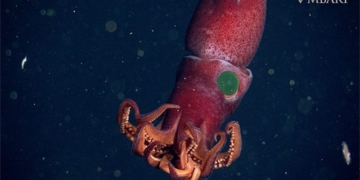A Snake Chose the Wrong Prey and Faced a Fierce Attack from a Family of Meerkats Behind a Resident’s Home in Johannesburg.
The battle between a snake and a group of meerkats. (Video: Avalon Kotze)
Avalon Kotze shared footage showing a snake trying to suffocate a meerkat to death while the victim’s family of 15 surrounded it, attacking its body and head on social media Instagram on March 29, according to Newsweek. The video was recorded by Kotze from the window of her kitchen at her home in Johannesburg, South Africa. The meerkats in the video, distinguished by their striped fur, are identified as striped meerkats, a native mammal species found in the sub-Saharan region of Africa.

Meerkats form a closed circle and attack the predator.
Striped meerkats are about the size of a cat, measuring approximately 30 – 46 cm in length, with tails that are around 30 cm long, according to the National Zoo and the Smithsonian Conservation Biology Institute. They primarily feed on insects, with their diet mainly consisting of millipedes and beetles, but they also consume birds, eggs, snails, fruit, and snakes. This species is highly social, living in groups averaging about 20 individuals led by a dominant male. While they may forage alone, they share various responsibilities, such as protecting against predators and hunting for snakes.
When faced with a threat, the meerkat group will gather and coordinate their defense to protect vulnerable members. Their boldness and cooperative behavior make meerkats formidable opponents. Any predator attempting to prey on a group member will undoubtedly have to contend with the rest of the family.
Striped meerkats can employ a defensive tactic known as “mobbing,” where the entire group forms a closed circle and takes turns attacking the predator, moving in unison and vocalizing to appear as a formidable adversary. The meerkat group also collaborates to care for their young. However, male meerkats may engage in fights during the breeding season, and females may occasionally be forced to leave if the group becomes too large.

















































